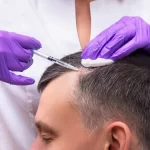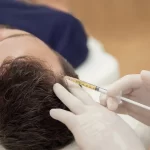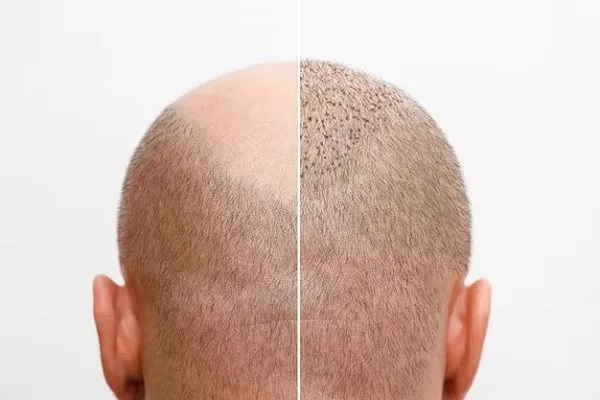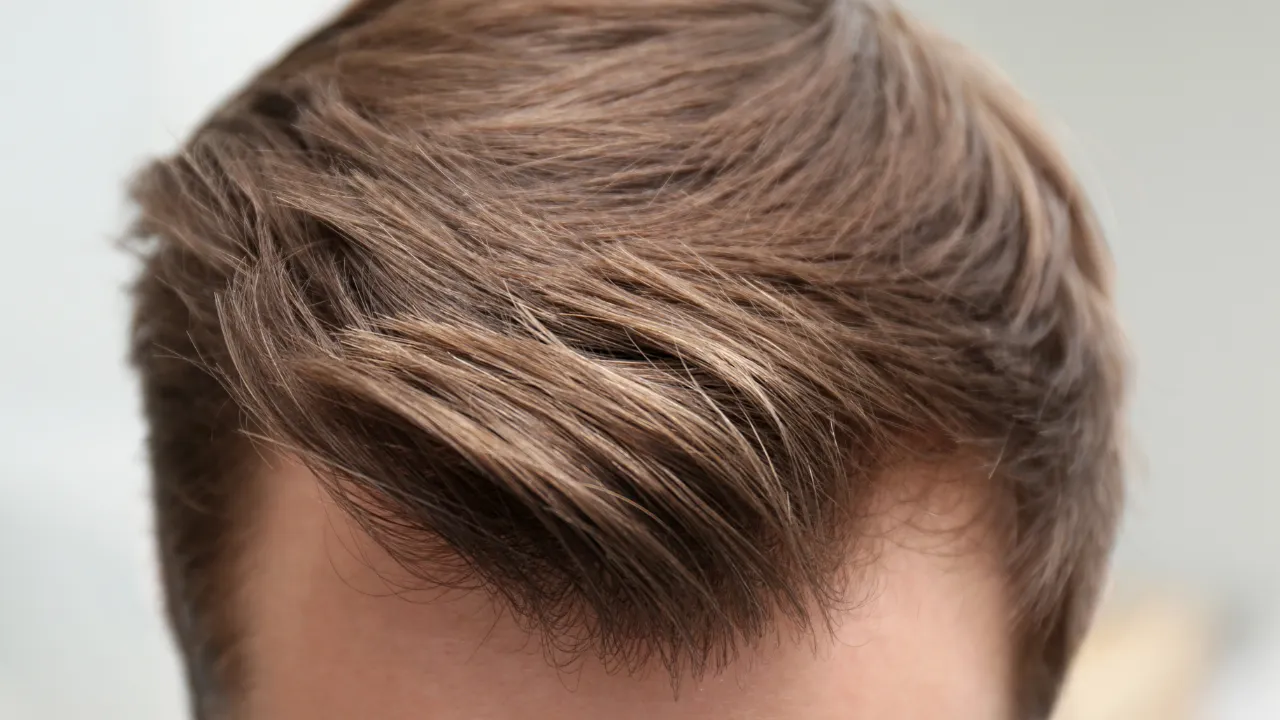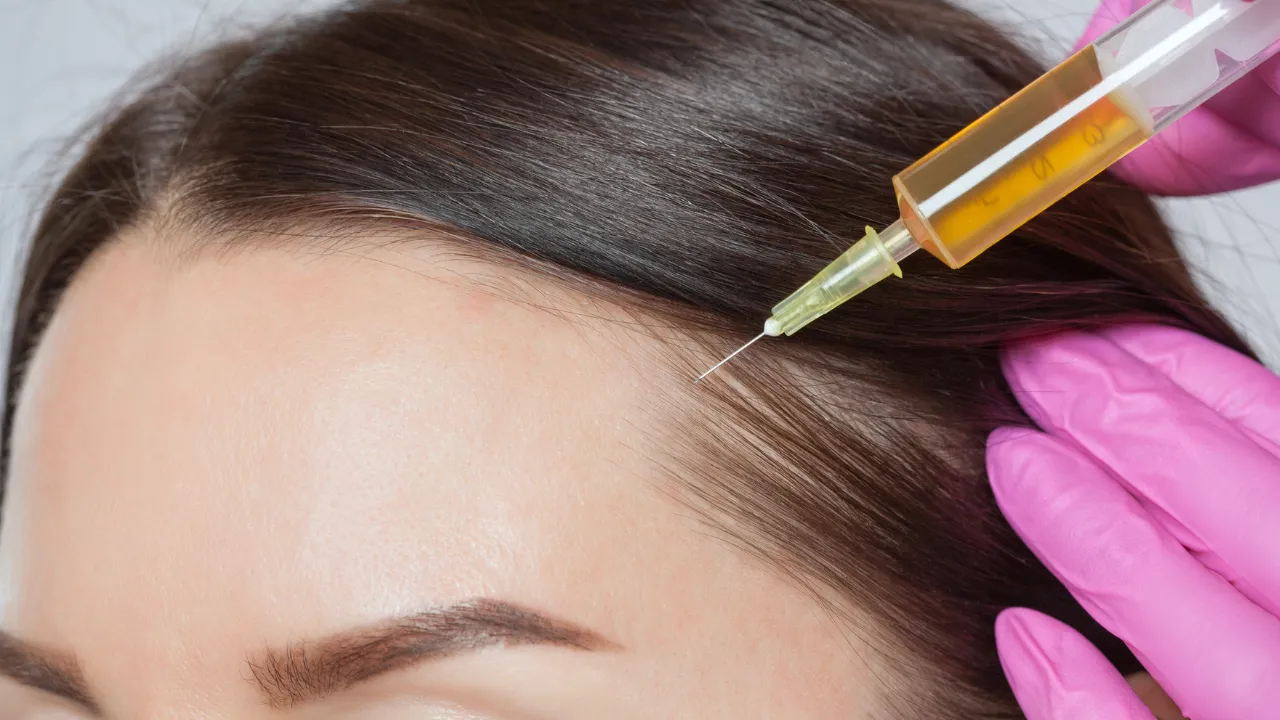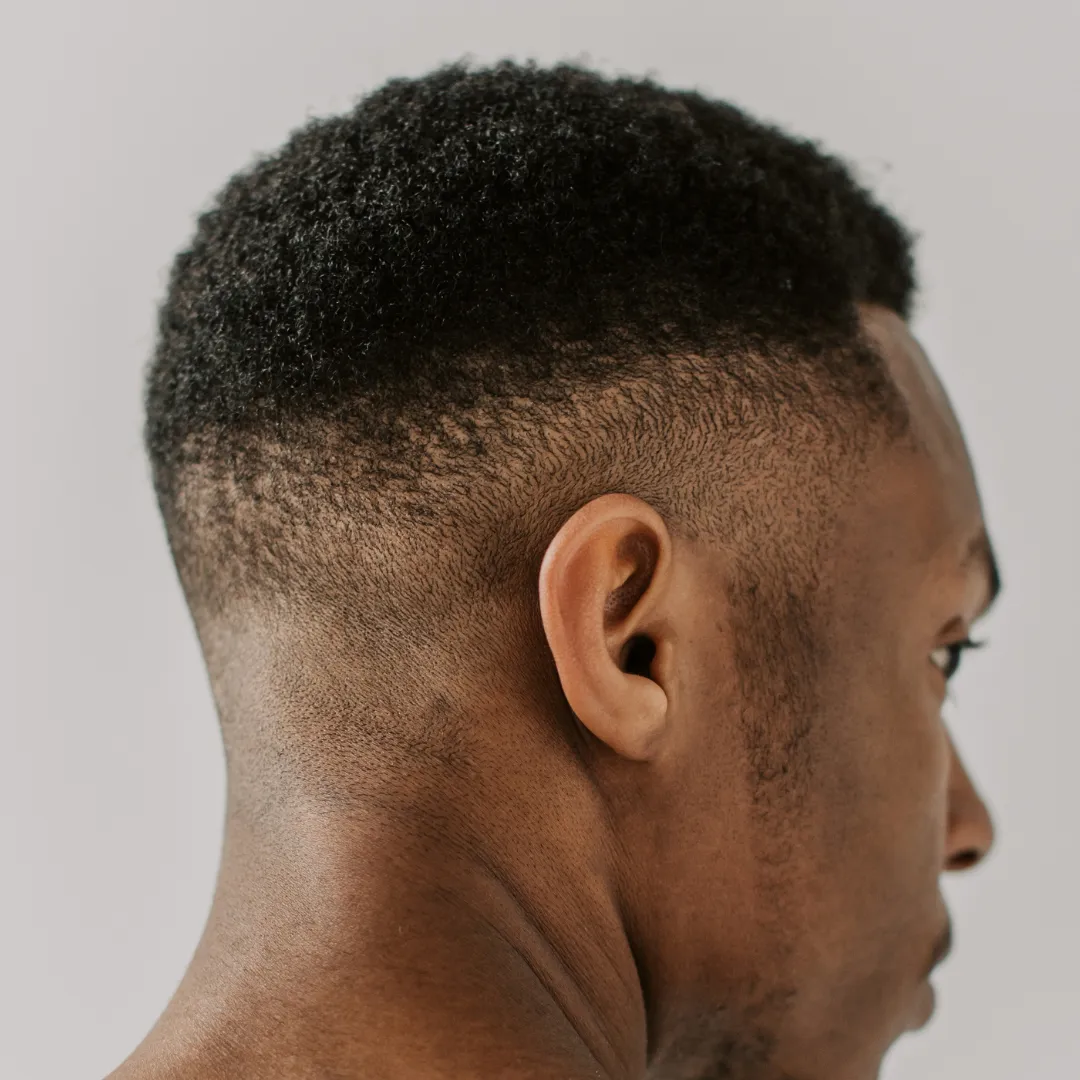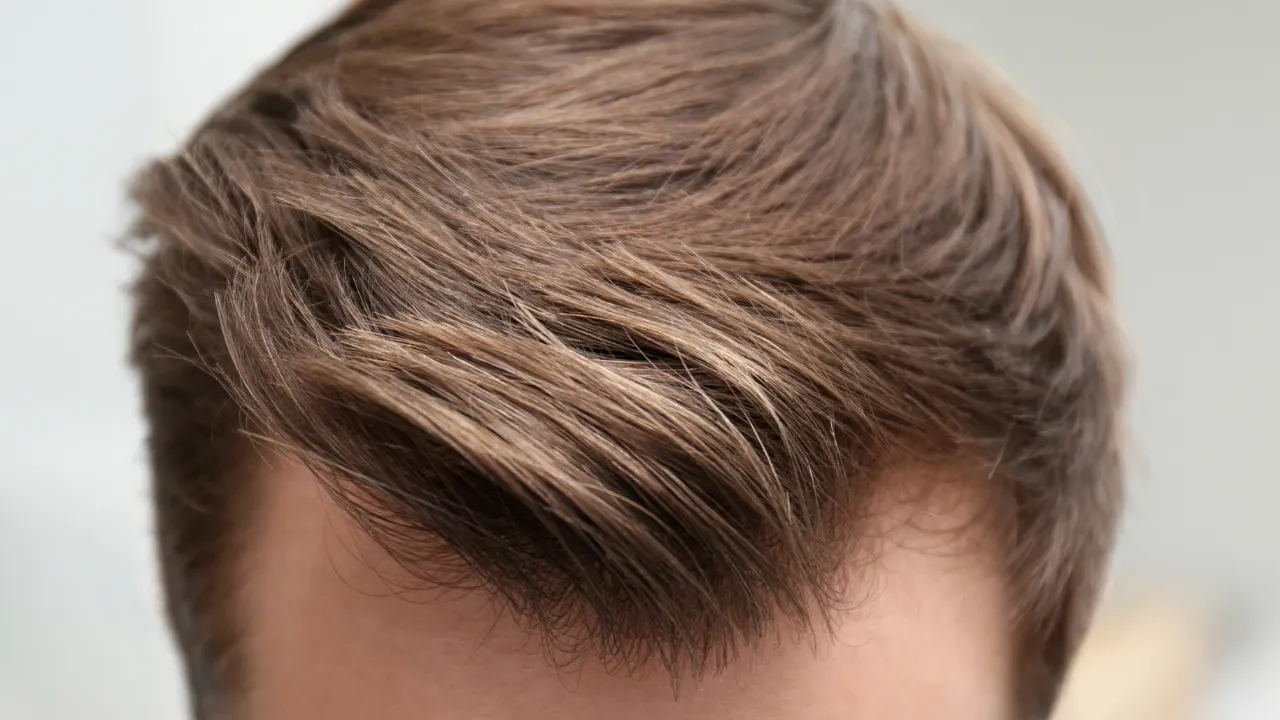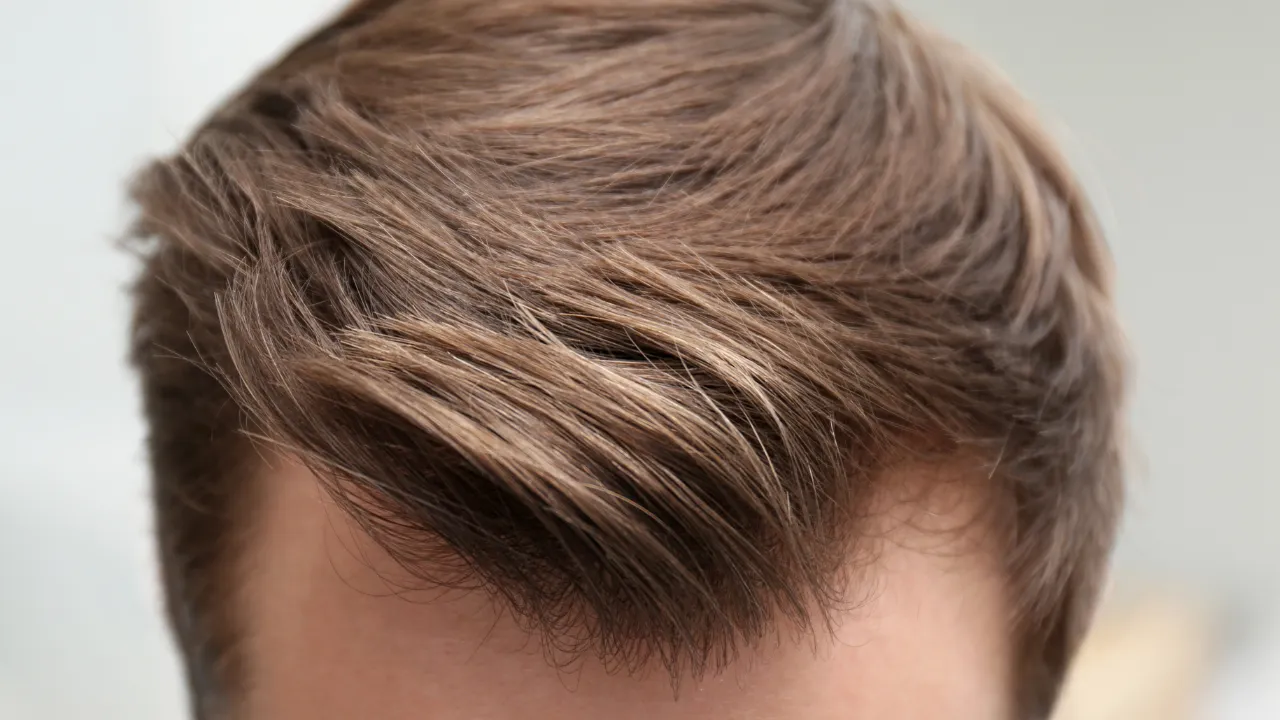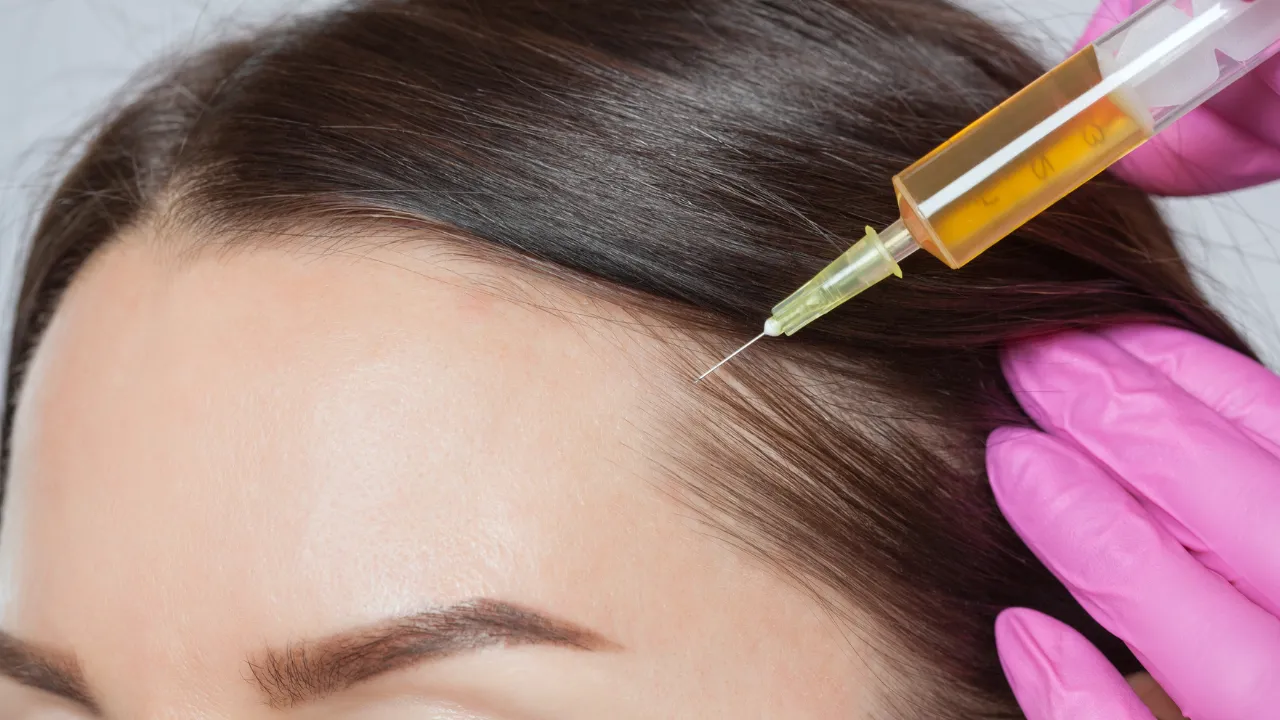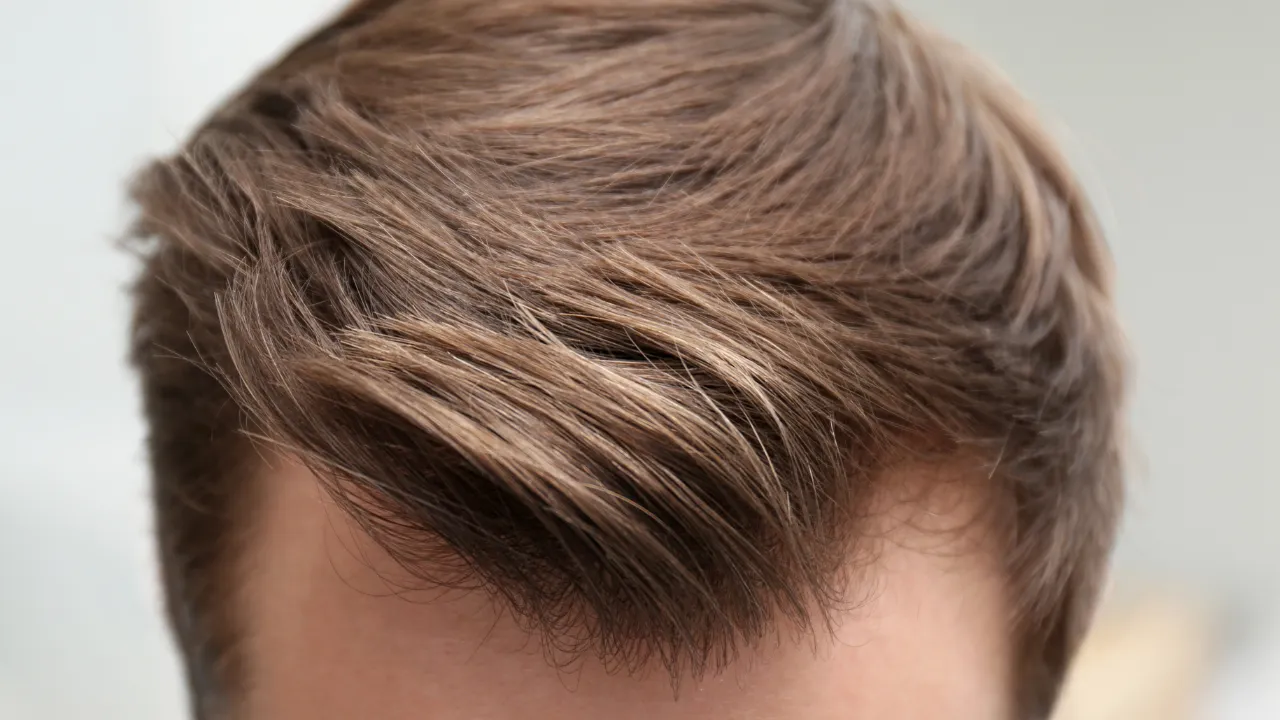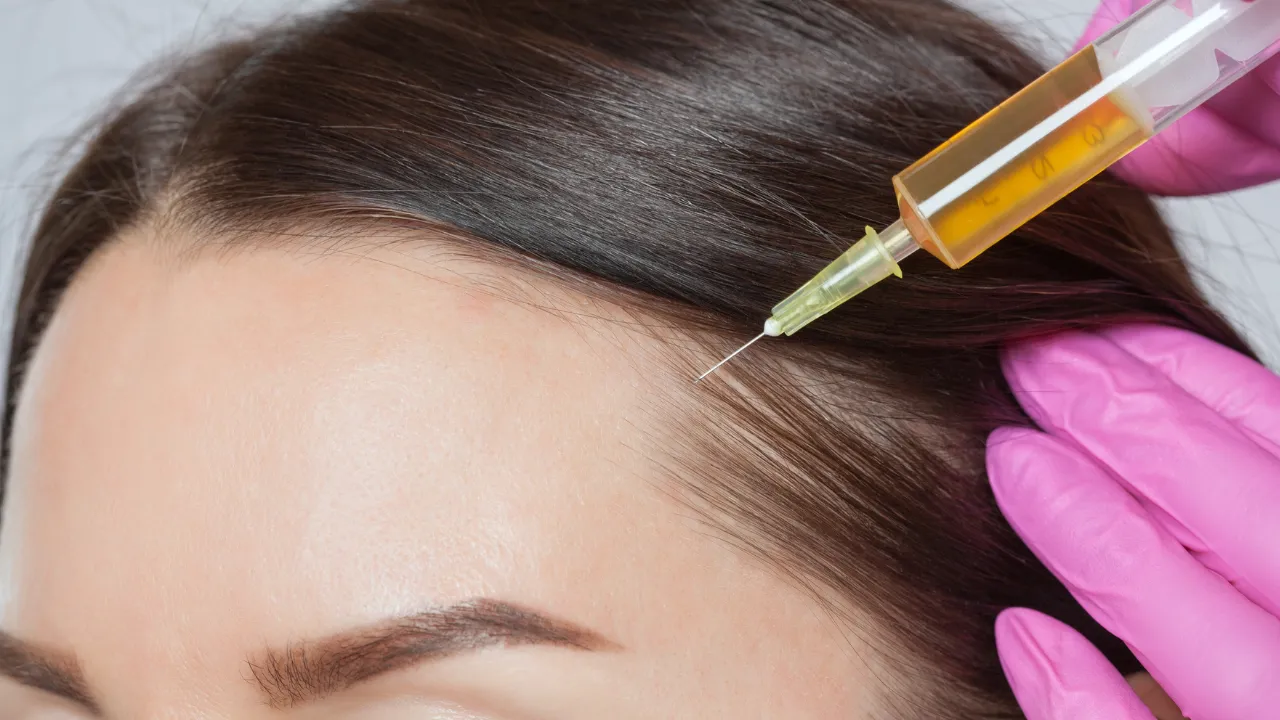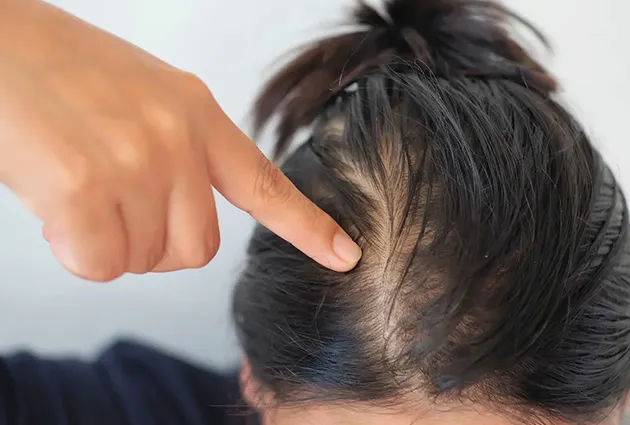Table of Contents
ToggleFrontal hair loss often begins subtly, but it can quickly become a major concern. For many, it’s more than just a cosmetic issue—it affects confidence and daily life. At Kopelman Hair, we offer medical expertise and tailored solutions for frontal hair loss, helping each patient find the right approach for their condition. Frontal alopecia treatment often varies depending on the cause, making expert diagnosis essential.
Understanding Frontal Hair Loss
What Is Frontal Fibrosing Alopecia?
Frontal fibrosing alopecia primarily affects the frontal hairline, causing gradual and permanent hair recession in that area.
Frontal fibrosing alopecia (FFA) is a type of scarring alopecia that causes gradual hair loss along the front hairline. It primarily affects women after menopause but can occur in others as well. Unlike typical hair loss, FFA involves inflammation and fibrosis of the scalp, leading to permanent follicle damage if left untreated. This medical condition is one of several types of hair loss patients may experience, including alopecia areata, which causes patchy hair loss on the scalp and other areas.
Common Causes and Risk Factors
Frontal hair loss may result from multiple factors:
- Hormonal shifts, such as those related to menopause
- Genetics or family history of hair loss
- Overuse of certain hair products or styles
- Autoimmune conditions targeting the hair follicles
- Hairstyles that cause traction alopecia from constant pulling
In the case of FFA, inflammation and immune response play a major role. Other causes of hair thinning in front, like androgenetic alopecia or female pattern hair loss, may be related more to genetic and hormonal patterns.
Autoimmune Conditions Linked to FFA
Research suggests that FFA is associated with autoimmune diseases. Lichen planopilaris is the most directly related condition, and others such as lupus and thyroid disorders may also be linked. Understanding what autoimmune disease causes frontal fibrosing alopecia helps guide diagnosis and treatment.
Early Signs and Patterns
Signs of Frontal Hair Thinning in Men and Women
The frontal hairline is often the first area where hair loss becomes visible.
In men, frontal baldness often appears as a receding hairline or thinning front hair. Women may notice hair density loss without a clear hairline recession. In both cases, losing hair at the front is typically gradual and easy to miss at first. Losing hair at front of head woman can manifest subtly, often only noticed when styling hair.
Signs to look for:
- Thinner ponytails in women
- Hair breakage near the temples
- Loss of eyebrows or sideburns in some FFA cases
How to Detect Early Stage FFA
Early stage frontal fibrosing alopecia may not present clear symptoms. Subtle signs include losing hair in corners of the forehead and a band-like recession pattern. Scalp redness, irritation, or a shiny appearance may also signal fibrosis of the scalp. A dermatologist can confirm diagnosis through a scalp biopsy and dermatoscopy.
Can Frontal Hair Loss Be Reversed?
Can You Regrow Hair Lost at the Front?
Regrowth depends on the cause and stage of the condition. With FFA alopecia, regrowth is unlikely once scarring occurs. That’s why early treatment is essential. In non-scarring cases like androgenetic alopecia, medical therapies may stimulate regrowth or slow progression. The sooner treatment begins, the better the outcome. While not all hair grows back, some treatments can improve appearance and density in affected areas.
Medical and Surgical Treatments
Frontal Fibrosing Alopecia: Treatments
There is no single cure for FFA, but several treatments help slow progression:
- Topical steroids or calcineurin inhibitors
- Oral medications like hydroxychloroquine or finasteride
- Anti-inflammatory therapies to reduce scalp damage
These treatments aim to manage inflammation and prevent further follicle destruction. Discussing treatment options with a specialist is essential.
Best Treatments for Thinning Front Hair
For non-scarring types, including losing hair at front of the head in women and men, available treatments include:
- Minoxidil (topical or oral) to stimulate follicles
- Low-level laser therapy to support blood flow
- Platelet-rich plasma (PRP) injections to encourage regrowth
These methods can improve hair density when used consistently. Always be informed of possible side effects with any treatment.
Hair Restoration for Male and Female Patterns
Hair transplant surgery is an option when medical treatments are no longer effective. At Kopelman Hair, Dr. Kopelman performs advanced procedures such as:
These techniques restore hair in natural patterns and are suitable for both men and women with stabilized hair loss.
Maintenance and Prevention Tips
Once hair loss is stabilized or regrowth begins, consistent care is essential to maintain results. This includes protecting the scalp, avoiding harsh styling habits, and sticking to a personalized treatment plan.
Tips to maintain scalp and hair health:
- Use sun protection (hats or SPF sprays) to prevent inflammation.
- Avoid tight hairstyles that pull on the hairline.
- Continue any prescribed topical treatments as advised by your specialist.
Dr. Kopelman recommends regular follow-ups to monitor scalp condition and make timely treatment adjustments.
Natural and At-Home Solutions
Natural Remedies, Vitamins, and Shampoos for Frontal Hair Loss
While not a replacement for medical care, some natural options can support hair health:
- Biotin, Vitamin D, and iron supplements
- Anti-inflammatory diets rich in omega-3s
- Gentle shampoos free of sulfates and parabens (check out our top organic hair products article).
Always consult a specialist before starting supplements. These methods can complement professional treatment plans, especially for early-stage cases.
Real Cases and Experiences
How I Cured My Frontal Fibrosing Alopecia
Many patients with FFA share their stories of managing the condition. While “cure” may not be possible for scarring alopecia, early diagnosis and consistent treatment can halt the progression. Some report stabilization with anti-inflammatory medication, combined with lifestyle changes.
Celebrities with Frontal Fibrosing Alopecia
Public interest in celebrities with alopecia has helped raise awareness about the emotional and medical challenges of living with hair loss, their openness helps reduce stigma and encourages others to seek help early. While exact diagnoses aren’t always shared, visibility of hair loss in public figures can motivate timely action.
Living With Frontal Hair Loss
Frontal hair loss, especially when caused by conditions like FFA, affects more than your appearance. It can impact self-image, social confidence, and daily interactions. Addressing these feelings is part of a complete treatment plan.
Ways to cope:
- Speak to a dermatologist early to confirm diagnosis and options.
- Join online support communities to share experiences.
- Consider hair styling adjustments to reduce visibility while undergoing treatment.
Mental health support can also play a role, especially when hair loss affects emotional well-being.
Expert Help at Kopelman Hair
Custom Plans for Frontal Hair Loss
Each patient’s hair loss pattern and cause is different. That’s why we create individualized plans at Kopelman Hair. These may combine prescription treatments, in-office therapies, and long-term monitoring. We assess scalp health, progression stage, and patient goals.
Why Early Intervention Matters
Delaying treatment may lead to permanent follicle damage, especially in cases involving fibrosis of the scalp. Acting at the first signs of frontal thinning greatly improves results. Dr. Kopelman brings over 40 years of experience to guide patients through every step with precision and care.
What to Expect During Your Consultation
Your first consultation at Kopelman Hair involves a full assessment of your hairline, scalp condition, and medical history. We may recommend diagnostic tools like dermatoscopy or biopsy to confirm the diagnosis.
You’ll receive a personalized roadmap based on your stage of hair loss, overall health, and goals. We prioritize transparency, comfort, and clear next steps so you feel confident moving forward.
FAQs About Frontal Hair Loss
- Can women experience frontal baldness?
- Yes, women may experience thinning front hair or hairline recession, often linked to hormonal changes or FFA.
- Is FFA reversible?
- Once scarring sets in, hair regrowth is unlikely. Early stage frontal fibrosing alopecia treatment is key to preventing further loss.
- What helps with losing hair in corners of forehead?
- Topical treatments like minoxidil and anti-inflammatory options can help in early cases. For advanced loss, hair restoration may be needed.
- Does fibrosis of the scalp mean permanent damage?
- Yes, fibrosis indicates scarring, which permanently damages hair follicles. Managing inflammation early can help preserve remaining hair.
At Kopelman Hair, we are committed to helping you find the right solution for your unique case of frontal hair loss. Whether through medical treatment or surgical restoration, we guide you every step of the way, schedule your consultation now.




